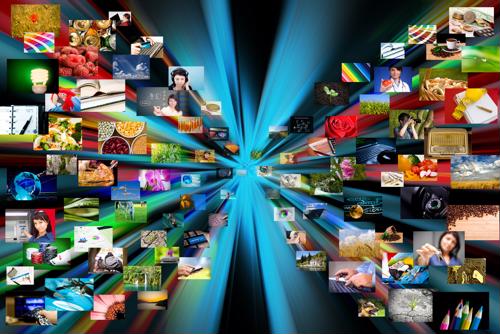Weddings have existed since time immemorial, of course – the majority of civilized human history – and it can be tempting to think that there are only so many ways to go about staging one. But this simply isn’t the case, and event planners must be sure not to fall prey to that sort of narrow, stuck-inside-the-box perspective.
There are a variety of ways a creative planner can bring refreshing elements into such a well-established occasion, and wedding tech is chief among them. Alongside tried-and-true elements such as live music and a custom step and repeat banner for photo opportunities, tech enhancements will help make a truly unforgettable wedding.
Make the most of a wedding hashtag
In many ways, social media has become one of the primary forms of cultural currency in modern society. It’s certainly become important to preserving the memories of weddings, with an “official” hashtag for Instagram and Twitter posts about the affair being one of the most visible methods of categorization.
Bridal Guide recommended using features such as printable cards to send with invitations and incorporating the hashtag into various event decorations that will be shown off on the big day. This also represents a perfect opportunity to put the custom backdrop to good use by having the hashtag be its main design, for fun group photos.
New twists on old videos
Wedding videos, in and of themselves, are nothing new. The average young couple might be cringing instinctively at the thought of their parents’ low-quality wedding tape (not to mention all of the outdated fashions on display). But now wedding planners can preserve memories of these big days in truly fascinating ways, due to how much technology has progressed. The Knot cited such radical examples as overhead video taken by drones, live streams over Facebook, Instagram or Twitter, GoPro cameras mounted to corsages, and even robots equipped with cameras roaming around the grounds of the wedding venue. Any one of these approaches is sure to produce candid and fascinating footage that couples will want to watch again and again in the future.
3-D printed decorations and favors
In the last several years, the concept of 3-D printing has emerged in the marketplace, at first seeing its most frequent deployments in the manufacturing sector. But it quickly spread to become applicable in a wide variety of consumer-level applications as well, and according to PC Magazine, wedding party favors and decorations are among them.
Offering 3-D printed favors provides the opportunity to create gifts that will truly stand out to attendees, because they simply won’t have seen anything like them before. Whether event planners enlist the services of a printing firm or use one of the various consumer-grade 3-D printers on their own, they can fabricate cards, ornaments, banners, novelty cooking tools and any number of other knickknacks. This will be sure to entertain guests in an unexpected way and allow everyone – not just the newlyweds – to fondly remember the occasion.






